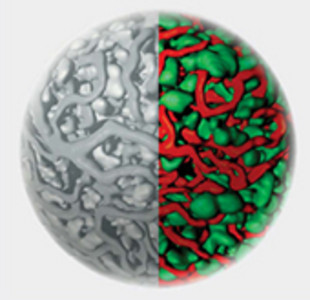The majority of obese people with insulin resistance do not develop type 2 diabetes; their pancreas is able to compensate for the metabolic problems. But when does this compensation fail? For an answer, researchers from the German Center for Diabetes Research (DZD) investigated how pancreas cells in living animals change during the development of type 2 diabetes. Initially, the function of the insulin-producing beta cells in the islets of Langerhans become more active. Subsequently, the islet mass also gradually expands. Prior to prediabetes, beta-cell function decreases, whereas the islet continues to grow. Thus, the first step plays the more significant role in the compensation. Since this heightened activity is based on an increased calcium efficacy in the beta-cells, the scientists see the possibility of new pharmacological approaches in the prevention of type 2 diabetes.
Original publication
Chunguang Chen et al., Alterations in β-cell calcium dynamics and efficacy outweigh islet mass adaptation in compensation of insulin resistance and prediabetes onset. dx.doi.org/10.2337/db15-1718. Diabetes 2016
Link to publicationhttp://diabetes.diabetesjournals.org/content/early/2016/04/07/db15-1718.article-info

